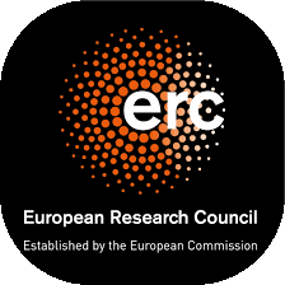GOALS
While it had been shown that magnetic fields are theoretically able to significantly contribute to solving the
angular momentum problem for star formation, the physics at work to conserve or dissipate angular momentum during
the main accretion phase – and therefore the processes allowing star, disk and planet formation – was still
surprisingly poorly understood when the project was
proposed for ERC funding in 2015. For example, the exact role of magnetic braking in regulating angular momentum during the
early phases of star formation still had to be addressed observationally.
The MagneticYSOs project aimed at testing
if magnetic fields are the missing piece allowing to solve the angular momentum problem during the Class 0 phase.
This major leap forward has been made possible by our novel approach combining unprecedented detailed analysis of a complete
set of observational constraints, and their confrontation to comprehensive MHD simulations of protostellar collapse.
MAGNETICYSOS MAIN CONTRIBUTIONS TO THE FIELD
MagneticYSOs has been a ground-breaking project, led between 2016 and 2022, which has allowed us to :
- interpret the polarized dust emission maps to infer the geometry and strength of the magnetic field,
- characterize magnetic diffusion processes to assess the efficiency of magnetic braking,
- compare the magnetic flux to the angular momentum content of the protostellar envelopes,
- confront this complete set of observational constraints to the predictions of magnetized collapse MHD models.
By thoroughly assessing the
properties and roles of
magnetic fields in the
youngest protostars, we have been
able not only to address and
partially solve one
of the oldest and most
challenging question for our
understanding of star
formation, the angular momentum problem
in star formation, but also to
address other related astrophysical
questions, eg:
- How efficient are the
accretion/ejection processes,
e.g. how is the prestellar
core mass reservoir
transforming into a young
stellar object and its protoplanetary disk ?
- How are the magnetic and kinematical properties of the parent core transferred to the protostar, in particular which
fraction of the magnetic flux and angular momentum is delivered to the protostar and how does it compare to the magnetism
and rotation of young stars
observed before they reach the main sequence ?
- What are the physical ingredients driving the formation of multiple stellar systems, circumstellar disks, and ultimately
the initial conditions of
planet formation in those disks?
- We also were able to propose an
innovative approach using
polarimetry and
interferometric observations
compared to MHD model, to
characterize the properties of
dust grains in
protostellar environments, a
key question for our
understanding of early dust
evolution towards planetesimals.

